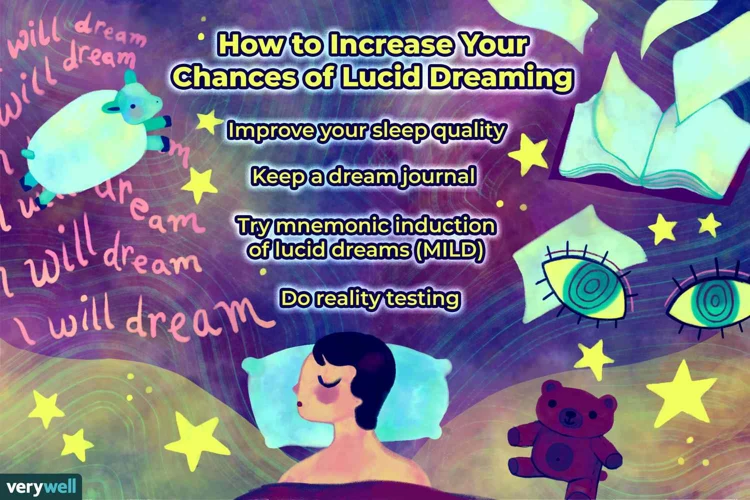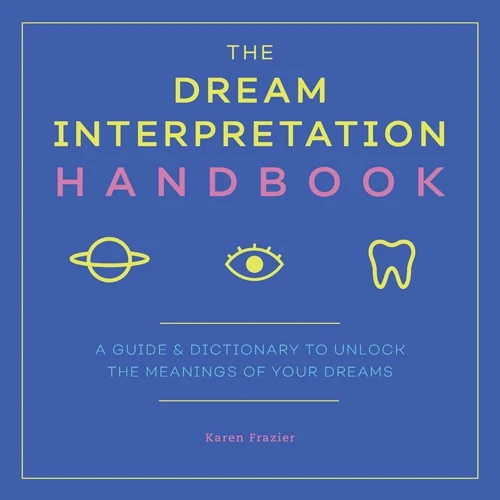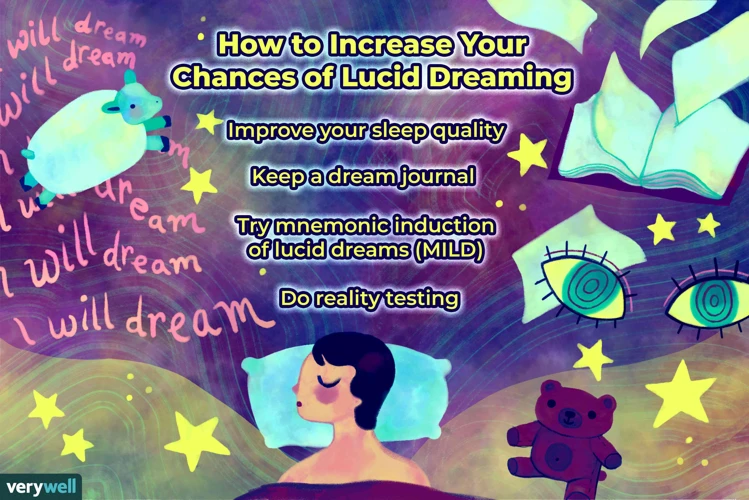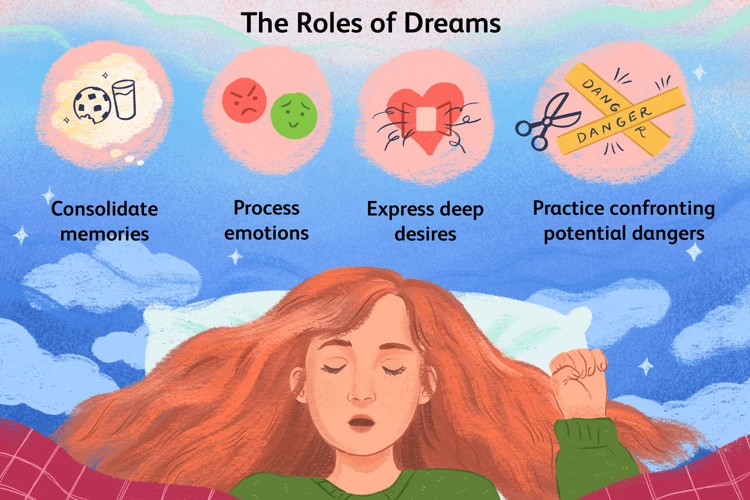Lucid dreaming, a phenomenon where individuals become aware that they are dreaming and can actively participate in their dream world, has long fascinated and perplexed both scientists and dream enthusiasts. Beyond the realm of entertainment, lucid dreaming has recently gained attention for its potential to promote emotional healing and well-being. This article explores the profound connection between lucid dreaming and emotional healing, delving into the ways dreams can increase emotional awareness, facilitate trauma processing, and provide an opportunity for emotional catharsis. Additionally, it provides practical techniques for inducing lucid dreams and offers tips for enhancing emotional healing within these dreams. Let’s embark on a journey into the fascinating realm of lucid dreaming and discover how it can heal the mind.
What is Lucid Dreaming?

Lucid dreaming, commonly referred to as a state of conscious dreaming, is an extraordinary phenomenon in which individuals become aware that they are dreaming while still in the midst of a dream. In a lucid dream, the dreamer has the ability to actively participate in and influence the dream environment, allowing for a level of control and awareness that is not typically experienced in regular dreaming. This heightened state of consciousness presents a unique opportunity for individuals to explore and interact with their own subconscious mind. By recognizing the dream state and manipulating the dream content, individuals can engage in activities such as flying, teleporting, or even conversing with dream characters. Lucid dreaming essentially bridges the gap between imagination and reality, offering a mesmerizing playground for the mind to roam freely. It is important to note that lucid dreaming is not the same as simply having vivid dreams or having control over the dream scenario. The key differentiating factor is the conscious awareness that the dreamer possesses during the dream state. This awareness allows individuals to actively participate in the dream, making lucid dreaming a powerful tool for self-exploration and personal growth.
How Dreams Affect Emotional Well-being

Dreams play a significant role in our emotional well-being, acting as a gateway to our subconscious mind and providing a platform for emotional expression and processing. During sleep, our minds unleash a plethora of vivid and complex dreams, each filled with a multitude of emotions. Dreaming allows us to experience and process various feelings, both positive and negative, that may be rooted in our daily lives or deep-seated within our unconscious minds. Dreams can elicit joy, love, excitement, and contentment, offering a sense of emotional fulfillment and satisfaction. On the other hand, dreams can also bring forth fear, anxiety, sadness, and anger, serving as an outlet for emotional release. The emotional content of our dreams often reflects our innermost thoughts, desires, and conflicts, allowing us to gain valuable insights into our emotional state and overall well-being. These dream experiences can linger upon waking, impacting our mood, mindset, and behavior throughout the day. Exploring and understanding the emotional landscape of our dreams can provide profound insights into our unconscious mind and help us navigate and address any unresolved emotions or psychological issues. The deep connection between dreams and emotions highlights the importance of exploring and harnessing the power of dreams, such as through the practice of lucid dreaming, to achieve emotional healing and balance.
The Connection Between Lucid Dreaming and Emotional Healing

The connection between lucid dreaming and emotional healing runs deep, as dreams have the potential to profoundly impact our emotional well-being. Emotions are an integral part of human experience, and they play a crucial role in shaping our perceptions, behaviors, and overall mental health. Lucid dreaming provides a unique platform for engaging with and processing emotions in a safe and controlled environment.
1. Increased Emotional Awareness: Lucid dreaming allows individuals to become more aware of their emotions within the dream state. One can consciously explore and experience various emotions, ranging from joy and excitement to fear and sadness. This heightened emotional awareness can expand our understanding of our own emotional landscape, facilitating greater self-awareness and emotional intelligence.
2. Trauma Processing and Resolution: Lucid dreaming holds potential for trauma survivors to engage in trauma processing and resolution within the dream space. By consciously revisiting and confronting traumatic experiences, individuals can gain a sense of empowerment and control over them. This process allows for the gradual healing and integration of past traumas, leading to emotional growth and resilience.
3. Rehearsal of Emotional Scenarios: Lucid dreaming also offers a unique opportunity to rehearse emotional scenarios that may be challenging or difficult in waking life. Whether it is practicing assertiveness, managing conflict, or expressing vulnerability, individuals can use lucid dreaming as a therapeutic tool to explore and develop coping strategies for various emotional situations, ultimately leading to greater emotional well-being.
4. Opportunity for Emotional Catharsis: Through lucid dreaming, individuals can experience emotional catharsis by safely expressing and releasing pent-up emotions. This can be particularly helpful for those who struggle with emotional suppression or have difficulty expressing their feelings in waking life. The dream world provides a non-judgmental space to fully experience and process emotions, leading to a sense of relief and emotional release.
Lucid dreaming unlocks the potential for deep emotional healing and growth. By harnessing the power of our dreams and actively engaging with our emotions within the dream state, we can tap into the subconscious realm and catalyze transformative emotional experiences. It is through this profound connection between lucid dreaming and emotional healing that we can embark on a journey towards greater emotional well-being and self-discovery.
1. Increased Emotional Awareness
Increased emotional awareness is one of the significant benefits that lucid dreaming can bring. When individuals become lucid within a dream, they not only gain control over the dream narrative but also develop a heightened sense of their emotions and their underlying causes. This awareness allows individuals to explore and analyze their emotions in a safe and controlled environment. Lucid dreaming acts as a doorway to the subconscious mind, providing an opportunity to delve into deeply rooted emotions and unresolved issues. By experiencing emotions within the dream state, individuals can confront and process difficult feelings, gaining insights and understanding that can carry over into their waking life. This increased emotional awareness can be particularly useful for individuals who struggle with identifying and expressing their emotions in their daily life. By harnessing the power of lucid dreaming, individuals can develop a greater understanding of their emotional landscape and cultivate emotional intelligence that translates into real-world interactions. It is fascinating to see how lucid dreaming can serve as a bridge between the conscious and subconscious realms, allowing for emotional healing and growth on a profound level. (source: science of lucid dreaming)
2. Trauma Processing and Resolution
Traumatic experiences can leave deep emotional scars that often linger in the subconscious mind. Lucid dreaming provides a unique opportunity for trauma processing and resolution, allowing individuals to confront and heal from painful memories within the safe confines of their dream world. During a lucid dream, individuals can intentionally revisit traumatic events and explore them from a new perspective. This process can allow for a sense of empowerment, as the dreamer can actively engage with the traumatic material and work through it in a controlled manner. In this altered state of consciousness, individuals may find themselves reimagining the traumatic event with a different outcome, confronting the fears associated with it, or even engaging in healing actions. The subconscious mind, which is highly active during dreams, holds a wealth of information and emotions that can impact our daily lives. By delving into the depths of the psyche through lucid dreaming, individuals have the potential to process and resolve traumatic experiences, leading to emotional healing and a newfound sense of freedom from the burdens of the past.
3. Rehearsal of Emotional Scenarios
Rehearsing emotional scenarios within lucid dreams can be a profound method for emotional healing and growth. In a lucid dream, individuals have the opportunity to intentionally recreate and experience emotional situations from their waking life. This allows them to confront and process unresolved feelings, traumas, or challenging situations in a safe and controlled environment. For example, a person struggling with social anxiety could create a dream scenario where they confidently interact with others. By rehearsing this emotional scenario repeatedly in the dream state, individuals can desensitize themselves to the anxiety and build confidence, ultimately affecting their real-life interactions. Additionally, the subconscious mind often reveals deeper insights and perspectives on emotional issues during lucid dreams. By exploring these emotional scenarios within the dream realm, individuals can gain clarity and develop strategies for emotional healing and resolution in their waking life. This aspect of lucid dreaming highlights its potential as a powerful tool for personal development and self-improvement. With the ability to consciously create and navigate emotional scenarios in dreams, individuals can actively work towards overcoming emotional obstacles and cultivating emotional well-being. It is truly remarkable how lucid dreaming can provide a space for emotional healing and growth, tapping into the profound power of the subconscious mind.
4. Opportunity for Emotional Catharsis
Emotional catharsis, the release and purging of intense emotions, is a powerful healing process that can have profound effects on our well-being. In the realm of lucid dreaming, individuals have a unique opportunity to engage in emotional catharsis within the safe confines of their dreams. Lucid dreaming acts as a therapeutic playground where individuals can confront and process deep-rooted emotions that they may not feel ready to face in waking life. By intentionally cultivating lucidity in their dreams, individuals can create scenarios and interact with dream elements that symbolize their unresolved emotions. This process allows them to experience an intense release within the dream, freeing themselves from emotional burdens that may have been weighing them down in their waking life. In the lucid dream state, individuals have the power to reshape and transform these emotional scenarios, providing an opportunity for resolution and healing. It is important to approach emotional catharsis in lucid dreams with mindfulness and self-compassion. Engaging in practices such as meditation and journaling can help individuals process and integrate the emotional experiences from their dreams into their waking life. The power of emotional catharsis within lucid dreams lies in its ability to bring about deep inner healing and promote emotional well-being.
Techniques for Inducing Lucid Dreams

Mastering the art of inducing lucid dreams can open up a realm of endless possibilities for individuals seeking to explore their subconscious mind. There are several techniques that can be employed to increase the likelihood of experiencing lucid dreams. One effective method is reality checks, where individuals consciously question whether they are dreaming or awake throughout the day by performing simple tests, such as looking at their hands or trying to push their finger through their palm. Keeping a dream journal is another powerful technique that involves recording dreams immediately upon waking, which enhances dream recall and can eventually lead to lucidity. Meditation and mindfulness practices serve to cultivate a heightened state of awareness, making it easier to recognize the dream state. The wake-back-to-bed technique involves setting an alarm to wake up after a few hours of sleep, then staying awake for a short period of time before going back to sleep with the intention of becoming lucid. These techniques, when practiced consistently and combined with a strong desire for lucid dreaming, can significantly increase the likelihood of achieving lucidity and embarking on extraordinary journeys within one’s own mind. Explore the fascinating power of lucid dreaming and discover the wonders hidden within the realm of the subconscious.
1. Reality Checks
– Perform reality checks throughout the day: Reality checks are a crucial technique for inducing lucid dreams. The idea behind reality checks is to question the nature of reality and establish whether you are awake or dreaming. By regularly questioning your waking state, you develop a habit of doing the same while dreaming, enhancing your chances of becoming lucid. There are various reality checks you can incorporate into your daily routine. One popular method is the “finger through the palm” technique. It involves attempting to push your finger through the palm of your opposite hand while asking yourself, “Am I dreaming?” In a dream, your finger may actually pass through your palm, indicating that you are in a dream state. Another common reality check is examining text or a digital clock. In dreams, text and numbers tend to change or become nonsensical upon multiple readings. By performing reality checks consistently throughout the day, you train your mind to question reality, which can carry over into your dream state.
– Use external cues as triggers: External cues can serve as valuable reminders to conduct reality checks, increasing the likelihood of becoming lucid in a dream. For example, you can place stickers or symbols in specific locations around your environment, such as your bedroom or workplace. Whenever you encounter these cues, take a moment to perform a reality check. It could be touching the sticker, observing its appearance, or trying to push your finger through it. These external triggers help create a subconscious association between the cue and the practice of reality checks, enhancing the chances of performing them in dreams.
– Combine reality checks with reflective questioning: Alongside performing reality checks, engage in reflective questioning about the nature of your surroundings. Ask yourself if anything seems strange or out of place, as dreams often contain illogical elements or surreal scenarios. By incorporating this reflective questioning into your reality checks, you deepen your inquiry into the dream state. This practice reinforces the habit of critically examining your reality, priming you for lucidity when you enter the dream world.
Securing a lucid dream through reality checks opens up a world of possibilities for exploring your subconscious mind and harnessing its power. By consistently incorporating reality checks into your daily routine, you pave the way for increased self-awareness, unlocking the transformative potential of lucid dreaming.
2. Keeping a Dream Journal
Keeping a dream journal is a valuable practice for anyone interested in exploring the realm of lucid dreaming. This technique involves recording your dreams in a journal immediately upon waking up. By documenting your dreams, you create a tangible record of the dream experiences you have had. This serves as a foundation for improving dream recall and increasing self-awareness within dreams. When you first wake up, take a few moments to reflect on the dream you just had and jot down as many details as you can remember. Include key elements such as the people, places, emotions, and any significant events or symbols that stood out to you. Writing in a dream journal helps to train your mind to become more aware of your dreams and enhances your ability to recognize dream signs and patterns. Over time, you may start to notice recurring themes or symbols, which can serve as triggers for lucidity in future dreams. Additionally, the process of writing down your dreams reinforces the importance of dreams in your subconscious mind, signaling your intention to explore and engage with them further. It is recommended to keep your dream journal by your bed so that you can easily access it upon waking. Regularly reviewing your dream journal can provide valuable insights into your own subconscious mind and serve as a foundation for developing lucid dreaming skills. For those seeking a step-by-step guide to lucid dreaming, check out this comprehensive resource.
3. Meditation and Mindfulness
Meditation and mindfulness practices have long been recognized for their ability to cultivate a state of present-moment awareness and enhance self-reflection. These practices can also play a significant role in increasing the likelihood of experiencing lucid dreams. By incorporating meditation and mindfulness into their daily routine, individuals can develop a heightened sense of self-awareness and mental clarity, two essential qualities for lucid dreaming. When it comes to lucid dreaming, meditation serves as a practice of training the mind to observe thoughts and emotions without attachment or judgment, creating a mindset that can carry over into the dream state. Through regular meditation and mindfulness exercises, individuals can strengthen their ability to remain centered and aware, even in the midst of dreams. By cultivating a mindful approach to their waking hours, individuals can increase their overall presence of mind and improve their ability to recognize the dream state when it arises. Additionally, practicing meditation before sleep can help calm the mind, making it more conducive to lucid dreaming. Meditation and mindfulness can deepen one’s connection with their subconscious mind, providing the opportunity to explore and access hidden aspects of the self during lucid dreams. By integrating meditation and mindfulness into their daily routine, individuals can enhance their lucid dreaming potential and embark on a journey of self-discovery within the realm of dreams.
4. Wake-Back-to-Bed Technique
The Wake-Back-to-Bed (WBTB) technique is a popular method for inducing lucid dreams. It involves waking up from sleep and then intentionally going back to bed with the intention of entering a lucid dream state. The WBTB technique takes advantage of the fact that most lucid dreams occur during the Rapid Eye Movement (REM) stage of sleep, which is typically experienced in the later part of the sleep cycle. Here’s how the technique works:
1. Set your alarm: Set an alarm to wake you up after about 4-6 hours of sleep. This ensures that you awaken during a REM sleep stage, which is when dreams are most vivid and lucid dreaming is more likely to occur.
2. Stay awake for a short period: After waking up from the alarm, stay awake for about 15-30 minutes. Use this time to engage in relaxing activities, such as reading about lucid dreaming or meditation. Avoid screens and stimulants that may interfere with your ability to fall back asleep.
3. Visualization and intention setting: As you prepare to go back to bed, visualize yourself becoming aware in a dream and setting your intention to have a lucid dream. Repeat affirmations such as “I will become lucid in my dreams” to reinforce your intention.
4. Return to sleep: Lie back down in bed and focus on relaxing your body and mind. Maintain awareness as you drift back to sleep, keeping your intention to have a lucid dream in mind.
By waking up briefly and then returning to sleep with the intention of having a lucid dream, the WBTB technique helps to increase your chances of entering a lucid dream state. It allows you to tap into the REM sleep stage, where dreams are more vivid and the mind is more receptive to conscious awareness. Incorporating this technique into your lucid dreaming practice can enhance your ability to have intentional and immersive dream experiences. For more information on the power of the subconscious mind in lucid dreaming, check out this informative article on the power of the subconscious in lucid dreaming.
Tips for Enhancing Emotional Healing in Lucid Dreams

Enhancing emotional healing in lucid dreams can be a profound and transformative experience. Here are some tips to make the most of your lucid dreaming journey:
1. Setting an Intention: Before falling asleep, focus on setting an intention to explore and heal specific emotional wounds or challenges in your lucid dream. This intention acts as a guiding force during your dream and can enhance the emotional healing process.
2. Confronting and Processing Emotional Blockages: Use your lucid dream as a safe and supportive space to confront and process emotional blockages or unresolved issues. Approach these emotions with curiosity and compassion, allowing yourself to fully experience and express them.
3. Seeking Guidance from Dream Characters: Interact with dream characters and seek their guidance in your lucid dream. Engage in meaningful conversations with them, asking for advice or insights on emotional healing. These dream characters can provide valuable perspectives and support.
4. Engaging in Symbolic Healing Actions: Take advantage of the dream environment to engage in symbolic healing actions. This can include visualizing emotional release, forgiveness, or engaging in activities that promote emotional healing, such as immersing yourself in nature or experiencing a powerful metaphorical transformation.
By incorporating these tips into your lucid dreaming practice, you can unlock the potential for deep emotional healing and gain valuable insights into your subconscious mind. Remember to approach your lucid dreams with an open and receptive mindset, allowing yourself to fully embrace the healing journey that awaits you.
1. Setting an Intention
Setting an intention is a crucial step in enhancing emotional healing within lucid dreams. By consciously determining what aspect of emotional healing you wish to work on, you can direct the focus of your lucid dream and guide the experience towards that specific goal. Here are some key points to consider when setting an intention for emotional healing in lucid dreams:
1. Clarity: Be clear and specific about the emotional aspect you want to address. It could be healing from past trauma, releasing negative emotions, or fostering self-compassion.
2. Affirmation: Frame your intention as a positive affirmation. For example, instead of focusing on the fear of abandonment, set an intention to cultivate feelings of security and trust.
3. Visualization: Visualize yourself already experiencing the desired emotional state. Use vivid imagery and engage your senses to make the intention more potent and realistic.
4. Repetition: Repeat your intention as a mantra before falling asleep, emphasizing it with conviction and belief. This helps to reinforce the intention in your subconscious mind.
5. Emotional Connection: Connect with the emotional energy associated with the intention. Feel its presence within you and try to evoke that feeling during your lucid dream.
By setting a clear intention, you create a roadmap for your lucid dream, allowing it to become a powerful tool for emotional healing. It provides a guiding focus and helps to maintain your awareness and purpose within the dream. Remember, intentions play a significant role in shaping our reality, both waking and dreaming.
2. Confronting and Processing Emotional Blockages
Confronting and processing emotional blockages is a crucial aspect of emotional healing within lucid dreams. When individuals become aware of their dream state, they have the unique opportunity to directly confront and work through unresolved emotional issues that may be weighing them down in waking life. Here are some approaches to effectively confront and process emotional blockages in lucid dreams:
1. Identify the Emotional Blockages: Start by identifying the specific emotions or issues that you wish to address in the dream. This could be anxiety, fear, grief, or any other unresolved emotions that you have been grappling with in your waking life.
2. Engage in Dialogue: Once you have identified the emotional blockages, engage in a conversation with dream characters, symbolic representations, or even your own subconscious mind. Ask questions to gain insights and perspectives that can help you understand the root cause of these emotions.
3. Express and Release: Use your lucid dream as a safe space to express and release your emotions. This could involve crying, shouting, or physically releasing the pent-up emotions that have been holding you back. The dream environment allows you to fully express yourself without judgment or fear.
4. Visualize Healing: Use the power of visualization to imagine yourself letting go of these emotional blockages. Picture yourself being free from the weight of these burdens, allowing healing and emotional release to occur.
5. Symbolic Actions: Engage in symbolic actions within the dream that represent the release and resolution of emotional blockages. This could involve breaking chains, crossing bridges, or any other action that signifies a breakthrough in your emotional healing journey.
By confronting and processing emotional blockages within lucid dreams, individuals can gain insights, release pent-up emotions, and ultimately experience healing and growth. It is essential to approach this process with an open mind and willingness to explore the depths of your emotions.
3. Seeking Guidance from Dream Characters
Seeking guidance from dream characters is a fascinating and valuable technique for enhancing emotional healing within lucid dreams. Dream characters often represent different aspects of ourselves, and they can provide insights, wisdom, and guidance that can be instrumental in our healing journeys. When lucid dreaming, one can intentionally seek out dream characters and engage in conversations with them, asking for advice, solutions, or simply seeking their perspective on a particular issue or emotional blockage. These interactions can be incredibly profound, as dream characters may offer unique insights and perspectives that we may not be consciously aware of. To seek guidance from dream characters, it is helpful to set the intention before entering the dream state. This intention can be as simple as stating, “I want to speak with a dream character who can provide guidance and support.” Once within the lucid dream, approach a dream character with curiosity and an open mind. Ask specific questions and listen attentively to their responses. Remember that dream characters may communicate in symbolic or metaphorical ways, so it’s important to be receptive and open to interpreting their messages. Seeking guidance from dream characters can provide deep emotional healing, offering new perspectives and alternative solutions to emotional challenges we may be facing in our waking lives.
4. Engaging in Symbolic Healing Actions
Engaging in symbolic healing actions within a lucid dream can be a transformative and powerful experience. In this state of heightened consciousness, individuals have the opportunity to use symbols and actions to address emotional wounds and promote healing. One way to engage in symbolic healing actions is through the use of objects or symbols that hold personal significance. For example, someone may choose to hold a photograph of a loved one to express forgiveness or release unresolved feelings. Another method is to visualize or enact a metaphorical representation of the emotional healing process. This could involve visualizing the breaking of chains to symbolize liberation from past trauma, or planting seeds to represent growth and transformation. Additionally, individuals can interact with dream characters who may represent aspects of themselves or significant people in their lives. Engaging in conversations or activities with these characters can provide insight, resolution, or closure to unresolved emotional issues. By actively participating in symbolic healing actions, individuals harness the power of their subconscious mind to bring about emotional healing and resolution.
Scientific Research and Studies

Scientific research and studies have increasingly focused on exploring the intriguing realm of lucid dreaming and its potential impact on emotional healing and well-being. One notable area of study has been the examination of the brain activity during lucid dreaming using advanced neuroimaging techniques. These studies have revealed fascinating insights into the neural mechanisms underlying lucid dreaming and its connection to emotional processing. For example, research has shown that during lucid dreaming, the prefrontal cortex of the brain, responsible for executive functions such as self-reflection and emotional regulation, exhibits heightened activity. This suggests that lucid dreaming may enhance our ability to process and regulate emotions while in the dream state. Additionally, studies have explored the therapeutic potential of lucid dreaming for individuals with PTSD and other trauma-related disorders. These studies have shown promising results, indicating that lucid dreaming can facilitate trauma processing and resolution by providing individuals with a safe and controlled environment to revisit and reframe their traumatic experiences. Research has revealed that lucid dreaming can also be used as a tool for rehearsing emotional scenarios, allowing individuals to practice and develop effective coping strategies for real-life emotional challenges. While more research is needed to fully understand the intricacies of lucid dreaming and its therapeutic potential, these scientific studies provide valuable insights into the power of dreams and their role in emotional healing.
Common Challenges and How to Overcome Them
Common Challenges and How to Overcome Them:
1. Difficulty in achieving lucidity: One of the common challenges individuals face in lucid dreaming is the difficulty in becoming aware that they are dreaming. To overcome this, it is helpful to practice reality checks throughout the day. Reality checks involve questioning one’s state of wakefulness by looking at a clock, trying to push a finger through the palm, or asking oneself, “Am I dreaming?” This habit will carry over into dreams, increasing the chances of recognizing the dream state.
2. Maintaining lucidity: Once individuals achieve lucidity in their dreams, another challenge arises in maintaining it. Excitement or overly focusing on the dream content can easily lead to a loss of lucidity. To overcome this, it is important to stay calm and grounded. Deepening techniques such as rubbing hands together or spinning in the dream can help maintain lucidity and stabilize the dream environment.
3. Dream control limitations: While lucid dreaming provides a degree of control over the dream scenario, there may still be limitations. For example, individuals may find it challenging to summon specific dream characters or change the dream environment. To overcome this, it is helpful to practice visualization and belief in the dream’s malleability. By expecting and trusting that changes can occur, individuals can enhance their ability to manipulate the dream.
4. Dream recall: One common challenge is the ability to remember dreams upon waking up. To overcome this, it is recommended to keep a dream journal by the bedside. As soon as one wakes up, jotting down any fragments or details from the dream can help improve dream recall over time. Regularly reviewing the dream journal can also provide insights and patterns within the dreamscape.
5. Fear and negative experiences: Occasionally, individuals may encounter fear or negative experiences within their lucid dreams. Overcoming these challenges involves facing them head-on and realizing that they hold no true power over the dreamer. Practicing mindfulness and self-affirmations can help promote a sense of empowerment and transform negative dream experiences into positive ones.
By being aware of these common challenges and implementing effective strategies to overcome them, individuals can maximize their lucid dreaming experiences and delve deeper into the realm of self-discovery and emotional healing.
Conclusion
In conclusion, lucid dreaming holds incredible potential for emotional healing and positive transformation. Through increased emotional awareness, the processing of trauma, the rehearsal of emotional scenarios, and the opportunity for emotional catharsis, lucid dreaming provides a unique platform for exploring and navigating our inner emotional landscape. Techniques such as reality checks, keeping a dream journal, practicing meditation and mindfulness, and using the wake-back-to-bed technique can help induce lucid dreams. Once in a lucid dream state, setting intentions, confronting and processing emotional blockages, seeking guidance from dream characters, and engaging in symbolic healing actions can enhance the emotional healing process. While scientific research on lucid dreaming and emotional healing is still growing, personal experiences and anecdotal evidence highlight the profound impact lucid dreaming can have on our emotional well-being. By delving into the depths of our dreams, we can tap into our subconscious mind, confront unresolved emotions, and foster personal growth. Lucid dreaming offers a captivating and transformative journey of self-discovery, opening doors to healing and empowering individuals to create positive change in their lives. So why not embrace the realm of lucid dreaming and embark on a path of emotional healing and self-transformation? The possibilities are boundless.
Frequently Asked Questions
1. Can anyone learn to have lucid dreams?
Yes, anyone can learn to have lucid dreams with practice and patience. While some individuals may naturally have more frequent lucid dreams, various techniques and methods can be employed to increase the likelihood of experiencing lucidity during sleep.
2. Are lucid dreams realistic? Can you see, hear, and feel in them?
Yes, lucid dreams can be incredibly vivid and realistic. In fact, the sensory experiences in a lucid dream can be indistinguishable from those in waking life. People report seeing, hearing, and feeling sensations just as they would in the physical world.
3. How does lucid dreaming affect sleep quality?
Lucid dreaming generally has no negative impact on sleep quality. In fact, some individuals find that having lucid dreams enhances their overall sleep experience, as the increased awareness and control can lead to a sense of empowerment and fulfillment.
4. Can lucid dreaming be dangerous?
No, lucid dreaming is not inherently dangerous. However, as with any intense mental activity, it is essential to practice lucid dreaming responsibly. It is crucial to prioritize one’s mental and emotional well-being while engaging in any dream manipulation techniques.
5. Can lucid dreaming be used for creative inspiration?
Absolutely! Lucid dreaming can be a powerful tool for tapping into one’s creativity. Artists, writers, and musicians often use lucid dreaming as a way to explore new ideas, gain inspiration, and engage with their creativity in a unique and immersive way.
6. Are there any side effects of lucid dreaming?
Most people experience no negative side effects from lucid dreaming. However, some individuals may report feeling slightly disoriented upon waking or having difficulty differentiating between dreams and reality in rare cases. These effects are generally temporary and diminish with time and experience.
7. Can lucid dreaming help with problem-solving?
Absolutely! Lucid dreaming offers a platform for problem-solving and creative thinking. By consciously engaging with dream scenarios, individuals can explore alternative solutions, gain new perspectives, and work through challenging problems in a unique and imaginative way.
8. Can lucid dreaming be used to alleviate nightmares?
Yes, lucid dreaming can be a valuable tool for managing and overcoming nightmares. With lucidity, individuals can transform nightmare scenarios, confront their fears, and foster a sense of empowerment to overcome recurring nightmares.
9. Can lucid dreaming improve self-awareness?
Lucid dreaming can greatly enhance self-awareness. By exploring one’s dreamscape and interacting with dream characters, individuals can gain insights into their own thoughts, emotions, and subconscious patterns, leading to a deeper understanding of the self.
10. Is lucid dreaming the same as astral projection or out-of-body experiences?
No, lucid dreaming is distinct from astral projection or out-of-body experiences. Lucid dreaming occurs within the dream realm itself, while astral projection and out-of-body experiences imply a separation of consciousness from the physical body. Though related in some ways, the experiences are different in nature.








